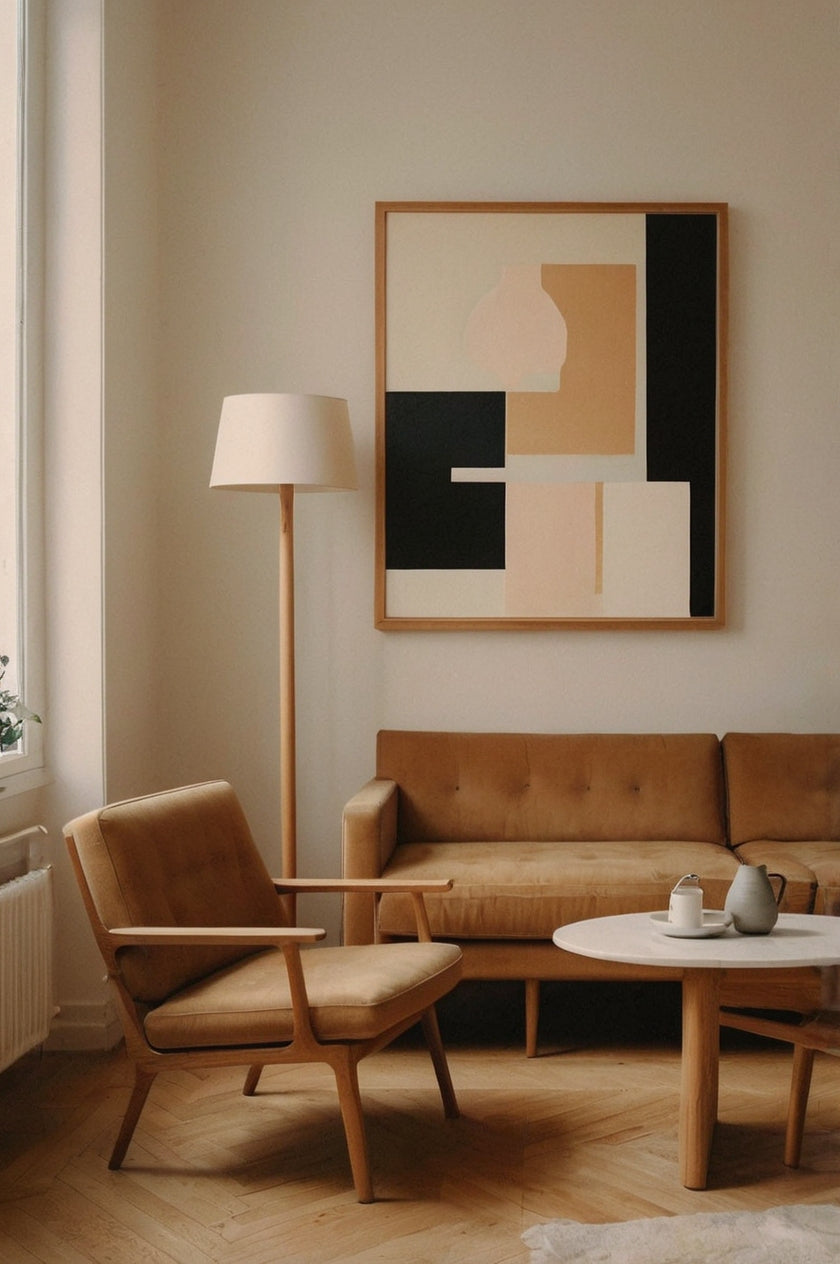
In today’s fast-paced world, it’s essential to create spaces where we can retreat, relax, and recharge. The physical environment plays a significant role in how we feel—both mentally and emotionally. One of the best ways to achieve a sense of peace and serenity is by designing calm spaces in our homes. Whether it's a bedroom, living room, or even a quiet corner, creating a calming environment can significantly improve well-being.
In this article, we’ll explore key elements to consider when designing spaces that promote calm and relaxation. From color choices to layout and décor, there are numerous ways to enhance the serenity of your home.
1. Choose Soft, Neutral Colors
Color has a powerful impact on our mood. For a calm, relaxing environment, it’s best to choose soft, neutral colors such as whites, creams, light grays, soft blues, and muted pastels. These shades promote a sense of quietude and tranquility. Colors like blue and green are known for their calming properties, making them perfect choices for spaces dedicated to relaxation, such as bedrooms or reading nooks.
Avoid bold, bright colors that can be overstimulating or create an energetic atmosphere. Instead, opt for hues that evoke calmness, such as soft taupes, pale blues, and even blush pinks. These colors are easy on the eyes and create a peaceful, serene atmosphere throughout the space.
2. Incorporate Natural Elements
Nature has an inherent ability to calm the mind and soothe the senses. When designing a calm space, try to incorporate natural elements like plants, wood, and stone. Houseplants not only add life and color but also purify the air, making your space feel fresher and more inviting.
Wooden furniture or accents, such as a reclaimed wood coffee table or a soft wood floor, create warmth and a sense of groundedness. Natural textures, like linen or cotton, also add to the overall peaceful aesthetic. Try adding woven baskets, stone sculptures, or driftwood to enhance the natural, calming vibe of the space.
3. Embrace Minimalism
Clutter can cause stress and make a space feel chaotic. One of the most important aspects of creating a calm space is to adopt a minimalist approach to décor. This doesn’t mean the space has to be bare, but rather that it should only include items that serve a purpose or bring joy.
Opt for clean, streamlined furniture and décor. Use simple storage solutions to keep clutter hidden and organize items in a way that maintains a sense of order. When you have fewer distractions, you can focus better and feel more at peace in your environment.
4. Create Soft Lighting
Lighting is essential in setting the mood of a room. Bright, harsh lights can feel jarring and disrupt the tranquil atmosphere you’re trying to create. Instead, opt for soft, warm lighting. Use dimmable lights or table lamps with warm-toned bulbs to create a gentle glow throughout the space.
Consider adding candles or fairy lights for a soothing effect. Natural light is also important, so make sure to maximize windows where possible, allowing natural light to flood in during the day. Window treatments like soft linen curtains can also help control the amount of light, providing an extra layer of comfort and privacy.
5. Add Calming Art and Décor
Art plays a significant role in setting the tone of a space. To create a calming environment, choose artwork that aligns with the peaceful, serene atmosphere you want to create. Abstract art with muted colors, serene landscapes, or minimalist art with soft lines are ideal choices for calm spaces.
The artwork you choose should evoke positive feelings and promote relaxation. Scandinavian-inspired art, for example, is often characterized by simplicity, light tones, and natural themes. Such pieces help to keep the room balanced and free from visual chaos.
6. Create Quiet Zones for Relaxation
To enhance the calming qualities of your space, create designated quiet zones where you can unwind and reflect. This could be a cozy reading corner with a comfortable armchair and soft throws, a meditation area with cushions and calming scents, or a small nook by a window for tea or coffee.
Designing spaces with quiet activities in mind—whether it’s reading, meditating, journaling, or simply daydreaming—ensures that you always have a peaceful spot to retreat to when you need to disconnect and unwind.
7. Use Textures to Add Comfort
Textures are an easy way to add depth and comfort to your calm spaces. Soft fabrics, such as wool, linen, and velvet, can create a cozy atmosphere. Layering different textures in your furniture, such as a soft rug, plush cushions, and a warm throw blanket, will make the space feel inviting and comfortable.
Opt for fabrics that invite touch and encourage relaxation. A thick knit throw, a soft velvet pillow, or a plush rug underfoot can make a huge difference in how a space feels, helping you to truly unwind and relax.
8. Incorporate Soothing Sounds
While not always considered in traditional interior design, sound is a powerful factor in creating a calming atmosphere. Soft background music, a water fountain, or even the rustling sound of leaves from an open window can add to the peaceful vibe of a room.
Consider a sound system that plays soothing instrumental or nature-based music. Alternatively, placing a gentle water feature in the corner of the room can enhance tranquility by adding a soft, calming sound to your space.
9. Scent Matters
Aromatherapy can be a wonderful addition to a calm space. Scents such as lavender, chamomile, and eucalyptus are known for their calming properties. Diffusers, candles, or even dried flowers can infuse your space with a gentle scent that promotes relaxation.
Essential oils or calming room sprays can also contribute to creating a peaceful atmosphere, improving your mood and making the space feel even more serene.
